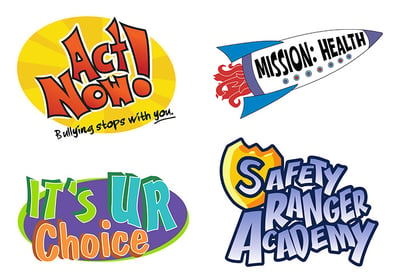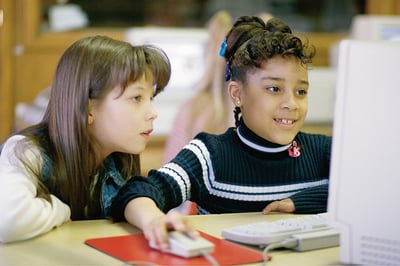
A young child stands alone in the hallway. He’s waiting for the next class to start, staring into the back of his open locker, wishing he could climb inside and disappear. He then hears the footsteps echo down the hall and the murmurs growing. Without looking he knows what’s coming. He hears the names being called and the other kids laughing. He feels his face become flushed and his heart rate quicken. He closes his eyes and tries to ignore it but the taunts grow louder. His chest swells with deep, heavy breaths. Suddenly, the bell rings and the kids disperse, but the boy remains at his locker, his fists clenched and cheeks wet with tears.
If your child saw this happening, would they know what to do?
The goal of Children’s Wisconsin is to not just heal sick kids but to also help healthy kids stay healthy. But just like learning how to read and write, kids need to learn how to be healthy. They need to learn what to do if they or one of their classmates is being bullied; they need to learn which foods are nutritious and which aren’t; they need to learn what to do in case of a fire or if they’re pressured to do drugs. And studies show that establishing healthy behaviors in kids at a young age has a profoundly positive effect on their overall health as they get older.
It’s well-established that direct medical intervention contributes to only about 10 percent of a person’s overall heath. The other 90 percent is determined by one’s environment (where they live, where they work), social and economic factors and behavior. That is why Children’s Wisconsin places such an emphasis on community outreach and e-learning. The best investment Children’s Wisconsin can make in a child is to teach them how to be and stay healthy.

“Kids spend the great majority of their day in school and what happens in school has a significant impact on their health and well-being,” said Katie Horrigan, director of community education and outreach, Children’s Wisconsin. “ We’re leaders in children’s health education and are proud of our partnerships with schools. Our outreach programs helps students have fun, learn better and live healthier.”
From a more practical standpoint, these e-learning courses help teachers fulfill state education requirements, teach kids important skills and help students and teachers build healthy habits.
“State education standards mandate that health education be taught at least once a week in classrooms in Wisconsin,” said Horrigan. “Our e-learning health education courses serve that need and make meeting that requirement easy for teachers and counselors by providing them with the tools they need.”
Children’s Wisconsin’s community health education efforts started way back in the early internet days of the 1998. Located in Schlitz Park in downtown Milwaukee, the Children’s Wisconsin Education Center (CHEC) was a massive interactive learning environment where students from local schools would come on field trips and learn all about a variety of different health topics.
Today, like most things in the world, these educational resources have moved online. While the curriculum may have changed, Children’s Wisconsin’s commitment to serving school communities hasn’t. And,its impact and reach has grown exponentially. When the e-learning program started in the 2007–2008 school year, 2,285 students in grades K4–8 completed the courses. For 2016–2017, that number grew to 109,020 students in 331 schools across 131 Wisconsin school districts. Milwaukee Public Schools account for 38 percent of the statewide usage.
Children’s Wisconsin currently offers four e-learning education modules: Act Now! (bullying prevention), Mission: Health (physical fitness and nutrition), Safety Ranger Academy (safety and injury prevention) and It’s UR Choice (anti-drug and alcohol education). All courses are free for classrooms to use. Courses for kids in grades K4–3 are designed to be teacher-led while students in grade 4–8 complete the coursework on their own. In all cases, the online content is supplemented with classroom activities.
 And the results are impressive:
And the results are impressive:
Act Now!
- 87 percent of 4th graders could identify positive bystander behaviors (up 13 percent)
- 87 percent of 5th graders could identify elements of cyberbullying (up 11 percent)
- 90 percent of 8th grade students could identify examples of sexual harassment (up 11 percent)
Mission: Health
- 77 percent of 4th and 5th graders could identify the healthiest fruits (up 11 percent)
- 79 percent of 6th-8th graders understood how much physical activity they should get (up 12 percent)
It’s UR Choice
- 92 percent of 6th graders could identify types of advertising used to influence risky behaviors (up 25 percent)
- 77 percent of 7th and 8th graders could identify types of advertising used to influence risky behaviors (up 25 percent)
“From teachers to kids to parents, the feedback we’ve received has been overwhelmingly positive,” said Horrigan. “Parents want to model healthy habits, but they, too, often need guidance. These modules have information and activities that kids can bring home and empower them to be advocates for healthy family habits.”
“Teaching health has had a great impact on our students,” said Natasha Harris, principal, Hopkins Lloyd Community School. “They learn different strategies that help them socially and emotionally and it has cut down on some behavior concerns we’ve seen. Instead of reacting in a way that may have been inappropriate they now have some strategies to use so they’re able to have a different reaction.”

“Our students got excited and ignited. They became leaders and problem solvers and critical thinkers,” said Tammy Kukla, a middle school teacher at Cooper Elementary. “Across the entire school, all the students were engaged.”
Not content to rest on its current success, the e-learning program continues to grow and expand. A revamped website was just launched, a mindfulness course will be rolled out in September and the community education team is looking into making the programs available to parents and families.
But despite the program’s evolution, the concept has remained as simple as ever: healthy kids learn more.
“Health is one of the most important things we can teach our children, just as important as reading and math,” said Brett Fuller, Milwaukee Public Schools curriculum specialist. “One of my friends says it best, ‘You need to be healthy to learn and you need to learn to be healthy.’”

Written by
Evan Solochek
Writer



